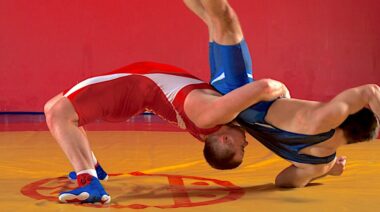When it comes to young athletes, the more information we have on healthy practices, the better off we are. This is particularly true when it comes to a sport as demanding as wrestling. While there is plenty of research out there on weight cutting, there are some other issues we can’t ignore surrounding youth wrestling. Those questions were discussed in a recent study published in the Journal of Strength and Conditioning Research.
The researchers in the study were interested in two questions:
- First, is wrestling a healthy activity for youth athletes to undergo? It’s a strenuous sport, so knowing whether it’s safe for kids is paramount.
- Do BMI or skin fold measurements accurately test the body fat levels of young wrestlers?
These goals might seem oddly diverse for one study, but they are certainly related. When a sport uses weight classes, athletes, parents, and coaches are always concerned about safety. Adults need to be careful to monitor both the training intensity and weight changing practices. Coaches also need to ensure the measurement tools they use to monitor weight are accurate. If your measurements are off, then safety can be compromised.
The first result of the study concerned the perceived adverse effects of athletics in youth participants. Some people worry that participation in youth athletics may have negative effects, such as stunted growth. The group of wrestlers in the study maintained normal growth patterns for the entire eight-year period of participation in athletics, as measured by the researchers. In fact, the major difference between the wrestlers and the general population was in body fat. The wrestlers had healthier, lower fat levels than the general population group.
The other major aim of the study was to compare direct fat measuring tools to indirect ones. Indirect measures tend to be simpler and thus are more common, but the researchers wanted to be sure these practices are accurate. Unfortunately, they were not. Neither of the tested indirect methods – skin fold measurements or body mass index (BMI) measurements – accurately told the body fat of the wrestlers when compared against hydrostatic (water tank) weighing, the gold standard of body fat testing.
When compared to using a water tank for direct measurement, BMI and subscapular skin fold measurements overestimated body fat levels. Other locations for skin fold measurements, including upper and lower body, and also total sum of skin fold measurements had the opposite effect, indicating a lower body fat level than the wrestlers actually had.
Because of the discrepancy in indirect measurement tools, the researchers suggest not using them at all. Relying on imprecise measurements might cause unsafe weight-class placement or unsafe body mass alteration practices. For a sport in which every pound of bodyweight counts, knowing for certain what a wrestler’s fat percentage is could change the course of the athlete’s season.
So, wrestling is indeed safe, but coaches and parents need to be vigilant about measuring an athlete’s adjustments to body weight and body fat. Our typical methods may under- or over-report these values in youth athletes, and knowing the difference is important for athlete safety. Stick with hydrostatic weighting whenever possible – it’s the gold standard for a reason.
References:
1. Kristen Cochrane, et. al., “Dissociations Among Direct and Indirect Indicators of Adiposity in Young Wrestlers,” Journal of Strength and Conditioning Research, DOI: 10.1519/JSC.0000000000000405
Photo courtesy of Shutterstock.






